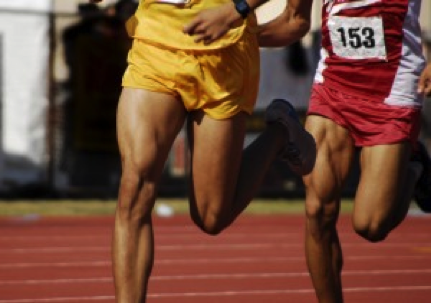Strength training to Improve Running Ability
In Functional Strength Training for Australian Rules Football, we detailed the long list of areas that functional strength training actually contributes to, or abilities that functional strength training improves. Far from simply being done in order to ‘put on size’ and ‘get stronger’, strength – and later plyometric and power – training is done to enhance footy specific expressions of power.
Key Point: Strength training for footy isn’t simply about ‘putting on size’ and ‘getting stronger’, but rather about improving movement and footy specific expressions of power.
And one of these footy specific expressions of power that we briefly covered was how it contributes to your running ability. Whilst this is a very broad term as there are so many forms of running (sprinting, agility, change of directions, acceleration and deceleration, etc), we are just going to refer to all these types under the same banner of ‘running’ for simplicity’s sake in this discussion.
As we said, the aim of all physical training modalities for footy are all to improve power output or more importantly to preserve the high power outputs throughout the course of a match. When developing power we can either;
- Increase a players ability to do more work in the same amount of time (an example would be completing more high intensity efforts or lay more tackles each quarter), or:
- Make the player more efficient at movement so that they are able to do the same amount of work in less time (an example would be to sprint the same distance quicker)


It should make sense that the stronger and more developed your legs are, the more efficient your running power-per-step will be.
In Agility, Speed & Conditioning for Aussie Rules Footy we quoted Darcy Norman who was working in the high performance team with the German National Soccer Team. He describes these as being the 2 main benefits of strength training for endurance athletes;
1. ‘With increased maximal strength the athlete has to produce less relative force per repetition of the skill, which then creates a decreased energy demand.’ In other words, as the muscles and tendons are stronger, the repeated steps in running will require less energy per step, and as a result feel less taxing for the same amount of work. And:
2. ‘Focusing on maximal strength development helps enhance neural durability and motor recruitment, making the whole system more resilient.’ In other words, with your system being trained to maximally recruit as many muscle fibers and have them and your joints being used to being placed under maximal load (from the strength training), there is less likelihood of soft tissue or over-use injuries occurring.
So strength training with single leg exercises in particular (lunge variations, step up variations, single leg deadlifts and the like), as well as adjusting the sets, reps, weights and tempos used with correct periodisation (there’s that word again) will contribute to this improved running ability, through both improving your power-per-step, as well as reducing overuse injuries and the likelihood of acute injuries as a result of the durability that has been built up by the appropriate strength training. This maximal strength can then be progressed to and combined with plyometric training, which then brings a faster and more explosive loading element to the training, and as a result, makes the exercise even more footy specific in its movement.
What you are seeing once again here, is that these different training modes (strength training, running training, plyometric training), which are almost always thought of as being separate in what they do (‘strength training to get size and strength’ and ‘running to improve my cardiovascular ability’), are actually tied together in the same end goal – developing footy specific expressions of power. Furthermore, when done correctly, the 2 complement each other, and improve each other, rather than hinder each other which is the common perception. The reason for this common misbelief is because much of the training being done (both weights related and running related) is incorrect for the end goal. Things like repetitive 5km runs, and bodybuilding style weight training are not going to get you far as a footy player – and these 2 forms of training are going to hinder each other, rather than complement each other as well. Unfortunately this combination of steady-state running and bodybuilding style weight training practices are the forms of training that are most often being done by young guys out there looking to improve.
By performing functional strength training, as well as more footy specific running sessions, you will find that the 2 go hand-in-hand. You will also notice that the functional strength exercises and programming principles are actually improving your running ability too, rather than hindering it – and after all, this is the goal, or one expression of the goal, of strength and power training: To develop footy specific expressions of power, rather than to ‘bulk up.’
In the coming week or so, we will have a look at 1 very good example of where the 2 training modalities (strength and running) overlap and work together to produce a desired result - in the area of developing agility and change-of-direction power, so stay tuned.
Strength Coach

